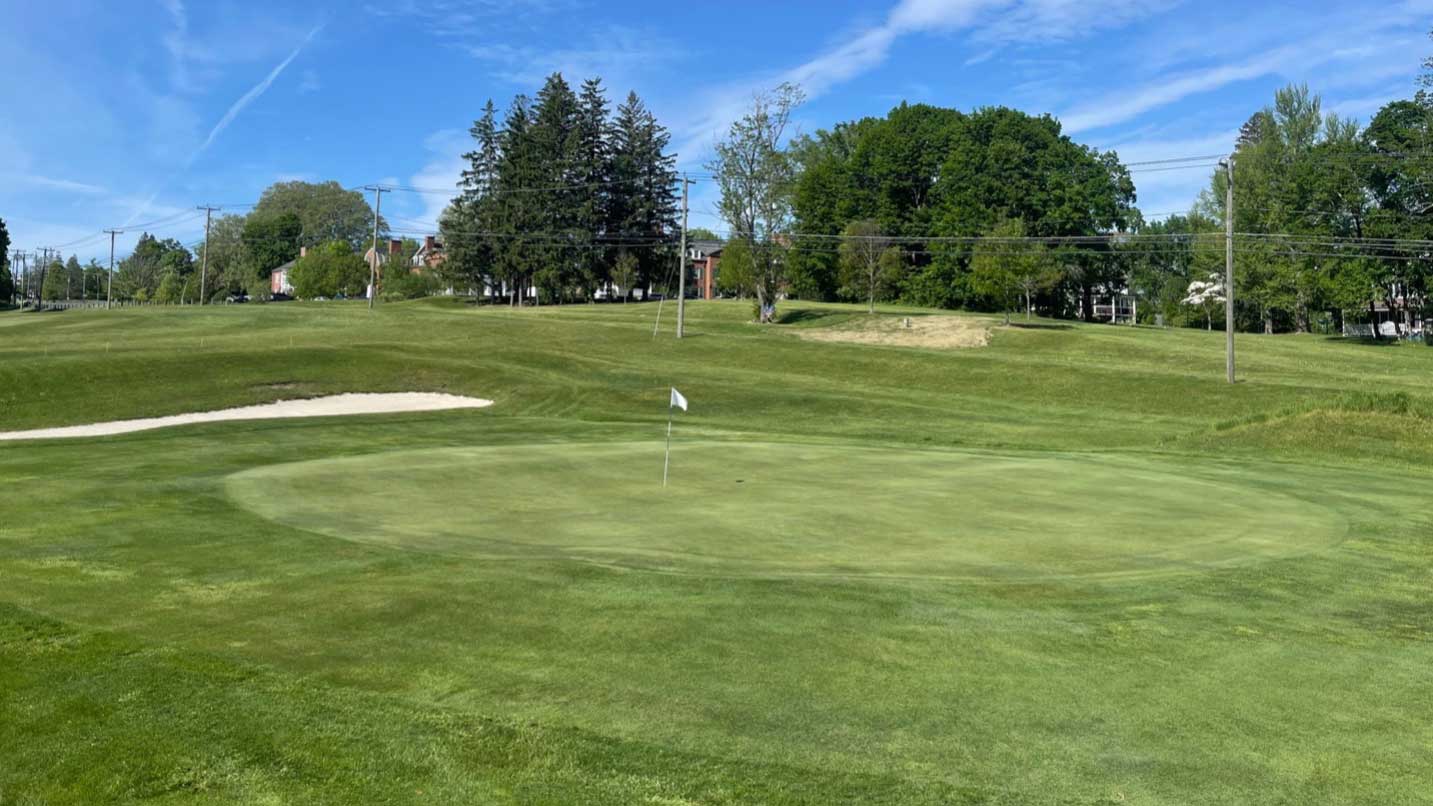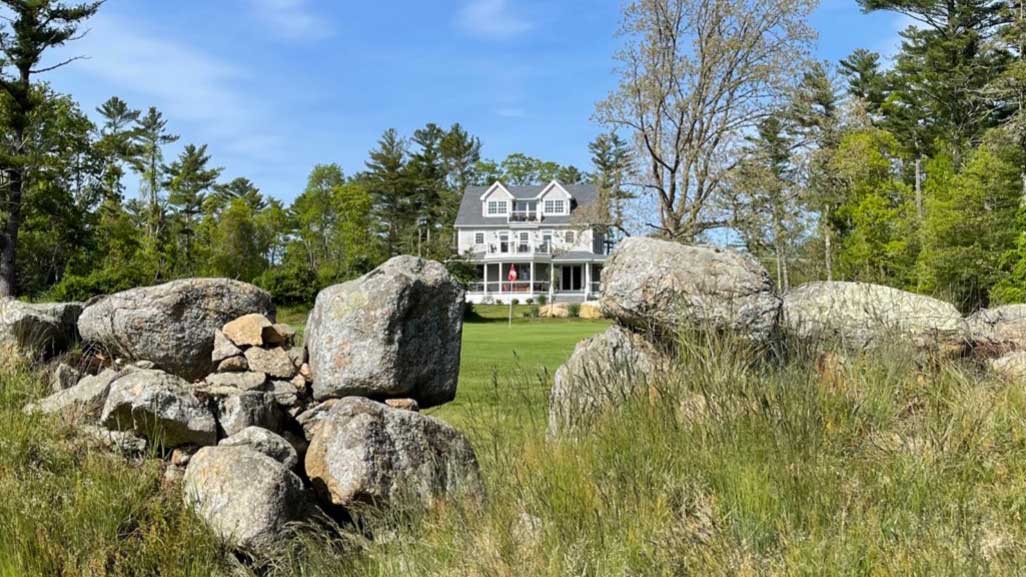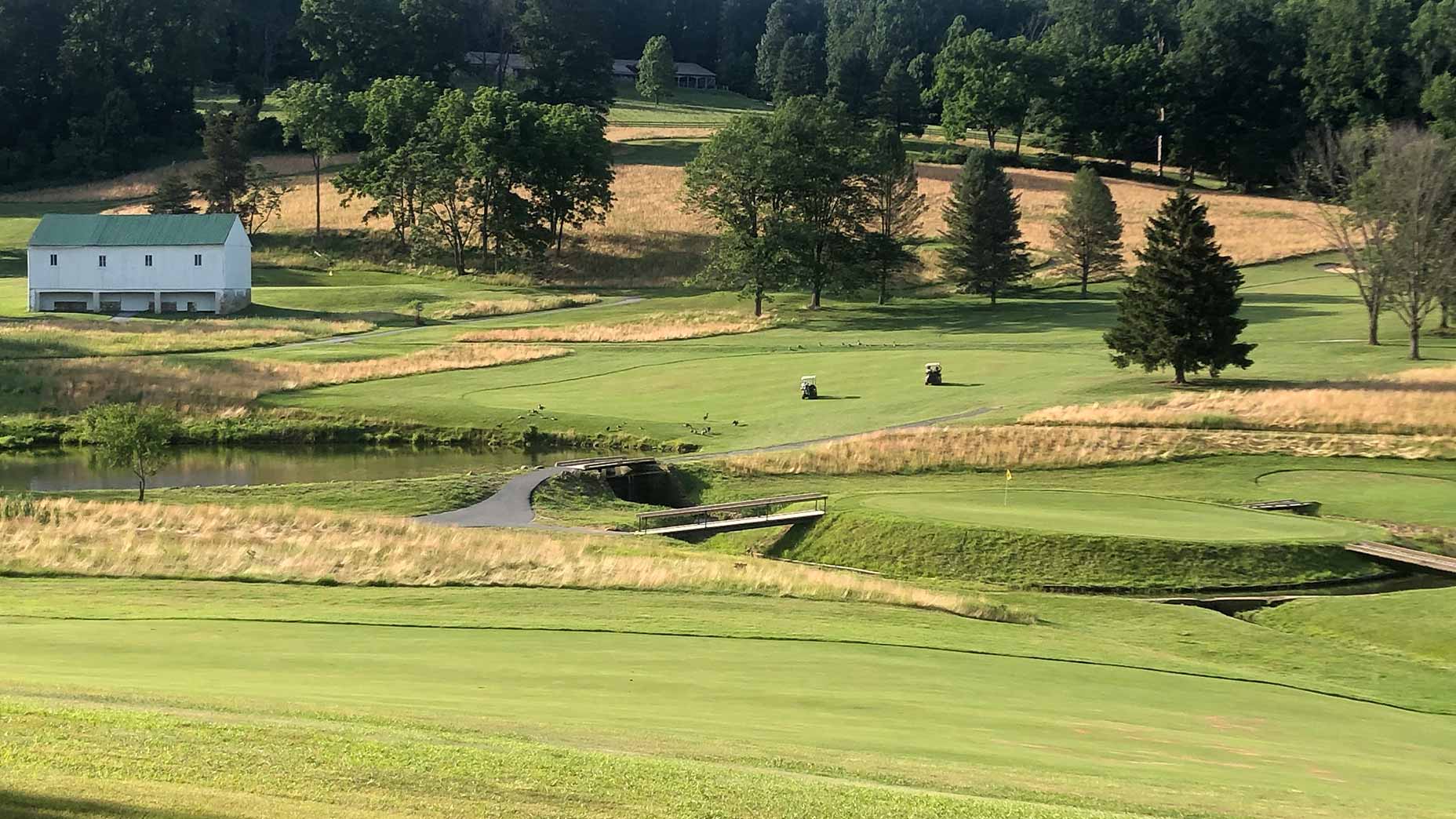Many golfers dream of absorbing the game’s rich history by driving down Magnolia Lane, attending service in Oakmont’s Church Pew bunker or tugging one of Merion’s signature wicker-basket flagsticks out of the hole.
But let’s be honest, for many golfers, those dreams also may never become a reality.
That’s OK, though! Because there are still plenty of other historically significant courses that are both accessible and easy on the wallet. None of the courses on this list has played host to a major, but each still has had an outsize influence on the game as we know it — and, best of all, they all can be played for less than $50! Let’s dive in…
Galen Hall Golf Club
Wernersville, Pa.
$43 riding 18 holes
Twenty minutes outside of Reading, Pa. and just more than an hour from Philadelphia is a golf course that claims to have the game’s oldest island green. After nine holes were already in place at Galen Hall, A.W. Tillinghast was brought in to add a second nine. Opening for play in 1917, the back nine showcases Tilly’s style with shots over creeks and up hills to elevated greens guarded by steep slopes and rock formations.
The 15th at Galen Hall is known as the Moat Hole (photo above) and is widely believed to be the oldest remaining island green still in its original form. Tillinghast may not have factored in potential advancements in golf-club technology when he sloped this postage stamp-sized green significantly from back to front and left to right while also surrounding it with water.
The 11 greatest island greens in the worldBy: GOLF Editors
It is a daunting target to hold, especially from the back tees, which stretch to 190 yards. While there is plenty of bailout room short of the moat, anyone with the ability to reach the green wouldn’t dare swallow the pill of laying up on a par-3.
Whether Galen Hall’s island green is indeed the oldest island is up for debate — Tillinghast built another island green at Shackamaxon Country Club, in New Jersey, around the same time that he constructed Galen’s — but it undoubtedly is one of the oldest.
With $43 green fees, Galen also is one of the best deals in golf. For the history alone! Without the influence of holes like Galen’s 15th, it’s hard to know if the modern template would have caught on. Certainly Pete and Alice Dye’s island green at TPC Sawgrass’ penultimate hole helped power the boom of island-green construction — see the examples at Coeur D’Alene Resort, PGA West’s Nicklaus Course and Rancho San Lucas — but the concept originated long before the Dyes had perfected it.
The Hotchkiss School Golf Course
Lakeville, Conn.
$16 walking 9 holes
In the early 1920s, Seth Raynor found himself spending much time in Connecticut while constructing The Golf Course at Yale. As a favor to the Hotchkiss boarding school, Raynor drew up plans to update the school’s nine-hole course. He built eight original greens but mainly kept the layout of the original holes intact while slightly changing the routing.
What makes Hotchkiss historically significant is that one of the school’s English teachers, Charles Banks, befriended Raynor here and carried out the construction plans for the course. After the new Hotchkiss course was completed in 1923, Banks quit his day job and joined Raynor full time as his protégé, the same way Raynor had quit his surveying job to join C.B. MacDonald in the design business. When Raynor died suddenly in 1926 at the age of 47, Banks completed all of his ongoing projects, in addition to having a stellar solo design career afterward.

The vast majority of MacDonald Seth Raynor courses are not only private but also exclusive. Golfing temples like National Golf Links of America, Chicago Golf Club and Fishers Island keep the MacDonald and Raynor names alive and well on course rankings to this day. Those designs are off limits for most, but Hotchkiss is not.
The characteristics of template design — or “ideal holes,” as MacDonald called them — are all over Hotchkiss. MacDonald built the ideal-holes concept by building holes at National inspired by his favorites from studying abroad in the British Isles. Raynor later perfected the concept by configuring the characteristics of these holes into the natural landscape of a new course.
As the style evolved, Raynor began implementing characteristics of multiple templates on a single hole, as he did often at Yale. A prime example is the 3rd hole at Hotchkiss. From the tee, you march up a hill to a blind green with a large flagpole behind that serves as a directional guide. The green sits below a hill that peaks 40 yards short, employing elements of an Alps hole (with the blind hazard) and also a Sahara bunker (between the hill and green).
The green itself acts both as a punchbowl and a maiden, with the fringe and rough helping balls funnel to the middle, and two humps dissecting the putting surface into three tiers.
The layout is much simpler than Yale’s, but there are similarities. As a friendly attendant in the pro shop said, Raynor designed Hotchkiss to prepare the boarding school’s golfers for Yale, where many of them went on to play collegiately. If Yale was designed to play like an advanced calculus class, then Hotchkiss was more like basic algebra.
For the same price as a bucket of range balls, surely no course has as much historical significance as Hotchkiss.
Marion Golf Course
Marion, Mass.
$22 riding 9 holes
Not to be confused with another historical course in Pennsylvania, Marion Golf Club, which dates to 1904, is the oldest remaining original design from George C. Thomas. If you’re not familiar with Thomas’ name, you still probably know some of his West Coast designs, including Los Angeles Country Club, Riviera and Bel-Air. Thomas was also involved in design committees that made the plans for Pine Valley and Cobbs Creek, both in the Philadelphia area. While Marion may not be wholly indicative of what Thomas’ style would become, it is like playing golf in a time capsule.
The holes are short and strategic, a tidy ground game is a must and, if the opportunity avails itself to play the course with hickory clubs, take it!
I did, and I had a blast playing the course with the clubs for which it was designed.

Even with hickories, I overshot the dogleg on the 290-yard par-4 2nd. I blame Thomas, who deceptively placed the 7th green in sight from the tee. Playing Marion for the first time, you can easily mistake the 7th green as the 2nd and would never expect such a short hole to take a 90-degree right turn.
As Thomas proved at Marion, with clever design it’s easy to toy with the golfers’ minds. I find this type of trickery borderline psychotic, and I mean that with the utmost admiration.
On each of Thomas’ three par-3s at Marion, stone walls guard the greens, forcing players to carry the hazard. These walls also act as visual obstacles, obscuring green undulations and any other penal areas on the other side.
Marion Golf Club is one of the few Thomas designs that is accessible to the public. An opportunity to play any of his courses should not be taken for granted as his design style vastly varied from that of his Golden Age peers.
At just $22 for 9 holes, you could easily afford to buy Marion a vowel. But no need, it’s fine just the way it is.


